Andong, South Korea
April 5th – 6th 2011
One of the things I was recommended to do while in South Korea was to visit a traditional folk village so I thought, why not visit one of the best, Hahoe Folk Village near Andong, about 2 hours bus-ride from Gyeongju.
I arrived in Andong bus station but was a bit lost because it wasn’t located where I thought it was on the map. I later found out this was the new station and my 2008 guidebook map was outdated. So I took a taxi into town (7000 Won, I later round out there’s a bus stop outside the bus station that could’ve taken me into town, those run at 1200 Won a ride which is standard no matter the distance traveled, just make sure you have small change.) I went to find a “yeoinsuk” which is a cheap guesthouse where we slept on the floor with a blanket and usually a shared bathroom. I figured it was time to return to my backpacking roots after my splurge in Gyeongju. This run at around 12000 Won/night. I was looking around when an old man invited me to check out his guesthouse, as the one I checked out previously was full (and really crap looking). Sure enough, he showed me a room where I had to sleep on the floor (adjustable heater pad underneath!) and it had its own bathroom (toilet, sink, working hot water) and even a small TV (with many channels). He wanted 20000 Won/night but I told him I would stay two nights and I got the price down to 15000 Won/night. Good deal. I had to get out of there soon because I had to catch a bus to Hahoe that same morning. (Not many buses run to Hahoe so if you miss one, you would have to wait another hour or two for the next one.)
There are no restaurants within the folk village itself so I had to go eat at some place just outside near where the bus dropped us off. Some Korean girl named Eun Ji from the same bus who’s also visiting Hahoe asked me if I wanted to eat lunch with her so I said why not. We ordered what she said was an Andong specialty, some chicken and vegetable dish with transparent noodles. Luckily there were two people because the price and portion was fit for three. (Did she know this? Was I being used?! But a foodie should never question, just eat.)
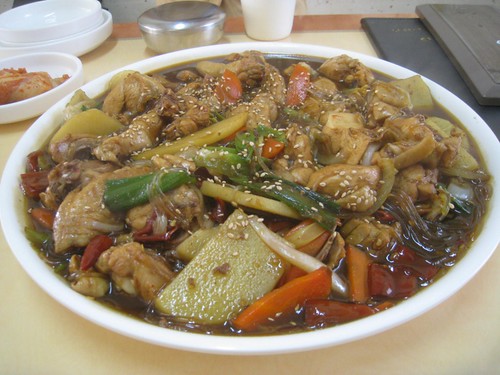
(Andong special chicken dish.)
We checked out the Hahoe Mask Exhibit first because it was right next to the place we ate. It was cool to see all kinds of masks worn all over the world. I thought it would’ve been cool to collect these personally but that was before I found out how most masks worn in plays/dances all over the world were ghoulish and monstrous. Only the Spanish Carnival masks were mysterious and sexy. The rest were more fit for Halloween.
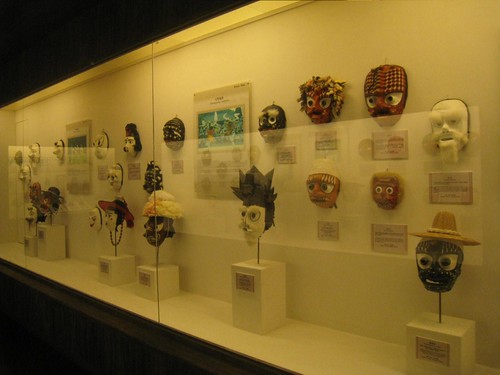
(Some masks. These were tame compared to the monsters upstairs.)
Hahoe Folk Village was brilliant. It’s old and traditional and meant to be kept that way by the villagers living there, all 200 or so of them. Farming’s a way of life out there but at this time of the year, the ground was mostly bare. Most homes, called “hanoks” were heated by a fire lit under them. It’s too bad we couldn’t enter them to see what they were like inside. But the countryside was plenty peaceful and walking around was nice. We found a tree which had so many pieces of paper wrapped on it which apparently contained wishes of people who came to see it. I wrote something down and so did Eun Ji. I later read that we had to actually walk around the tree three times first before writing our wishes but oh well.
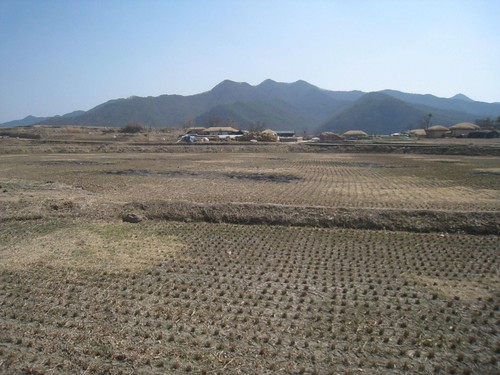
(Farmland.)
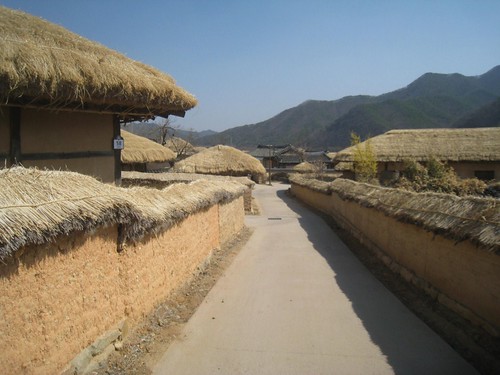
(A walk through the quiet village streets.)
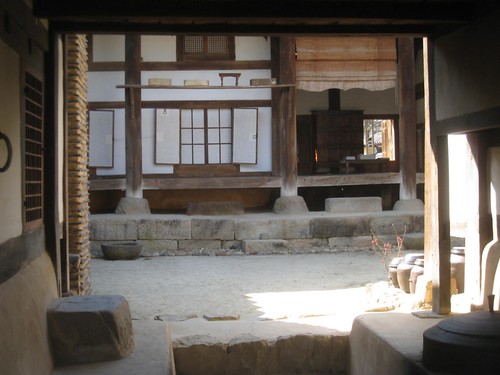
(Inside the compound of a home.)
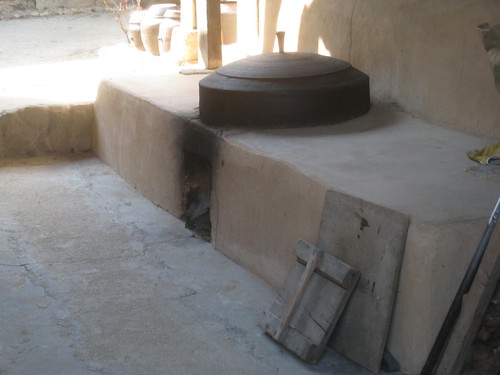
(How they warmed their hanoks.)
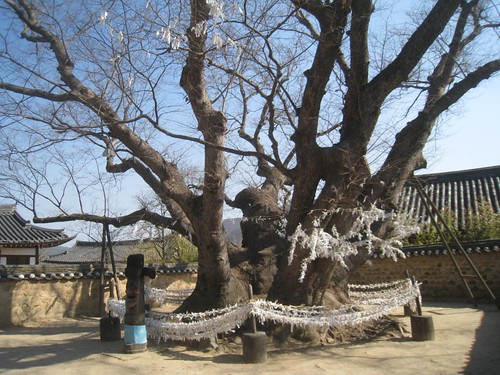
(The old tree with white paper leaves.)
Later, we came upon a playground which had a traditional swing, see-saw, and other things. People didn’t sit on see-saws. One person would have to stand one on end, the other person on the other end, then each took turn jumping to bounce the other person on their end. Not easy. The river there was dry and no boats ran to the other side where there was a cool looking residence on the riverside. All in all, a good look inside what life looked like in Korea many hundreds of years ago.
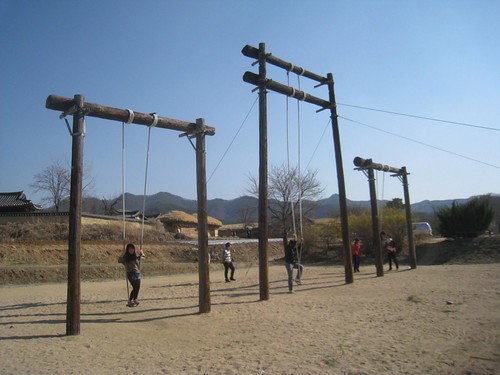
(You have to stand. They’re too close to the ground.)
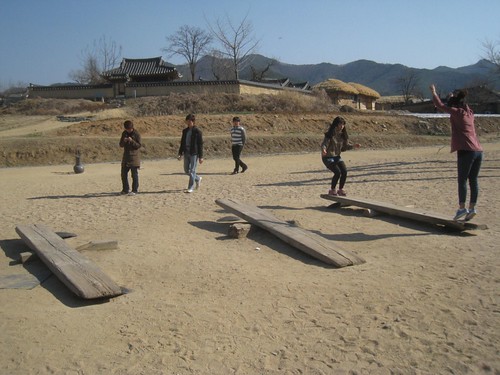
(Traditional see-saws.)
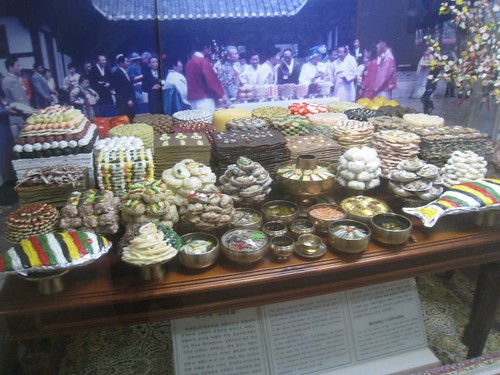
(What they prepared for Queen Elizabeth when she visited Hahoe.)
The next day, I went to visit the a Confucian temple called “Dosan Seowon” which was started by the guy on the 1000 Won note. His nickname was “Toegye”. I read that he was a scholar and good guy who fought against corruption back in the day. The academy itself was very quiet and empty save for the occasional visitor. Every writing was in Chinese.
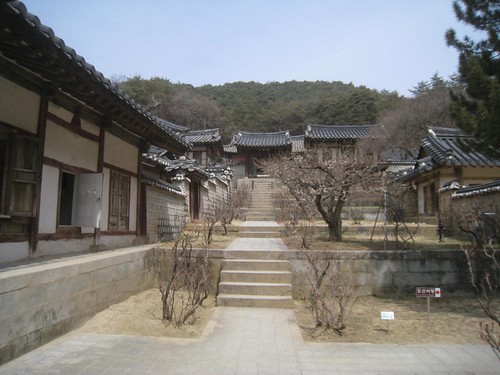
(Dosan Seowon compound.)
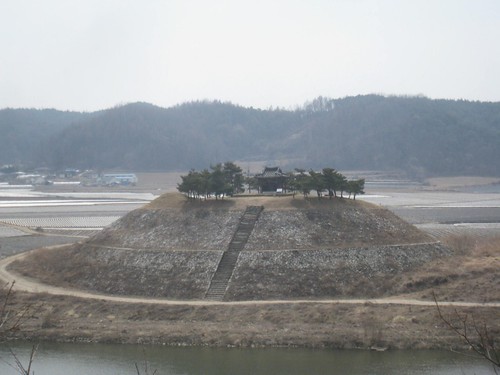
(Government exams were given here.)
One of my favorite foods in Andong was another specialty; salted mackerel. There are several restaurants selling it (fish + rice + banchan) so I had it for two dinners. Another day, I also had some good noodles at a noodle shop. It’s called “kal guk su”. There were no pictures to point out nor did I know what they sold or the prices but luckily, one of the servers said “kal guk su” and I immediately recognized the name from my L.A. days and I gave the affirmative.
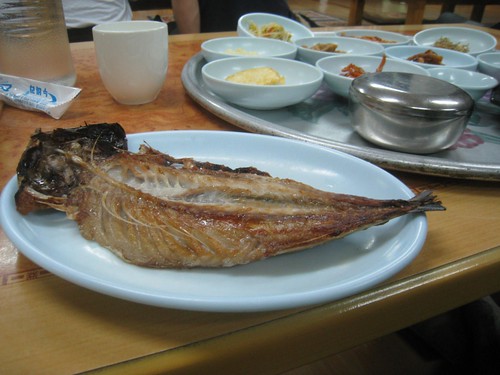
(Salted mackerel.)
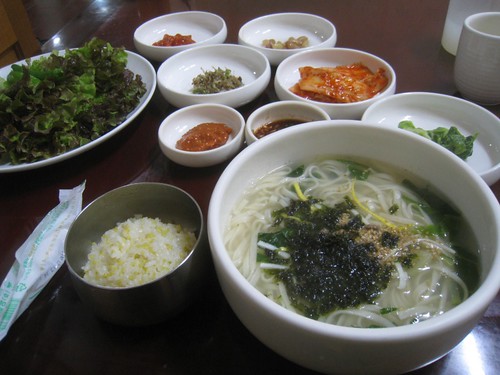
(Kal guk su.)
Off to Busan next.